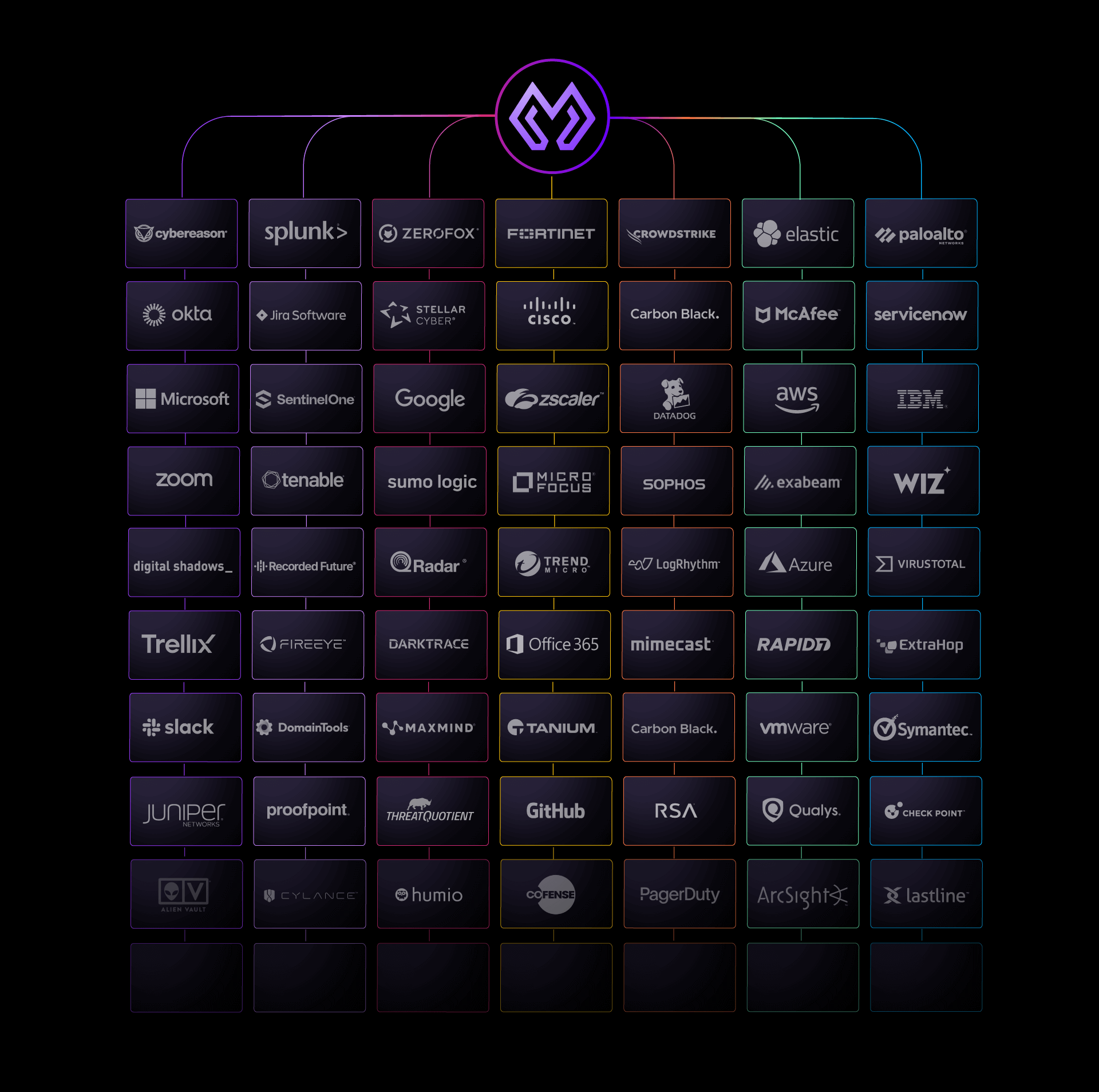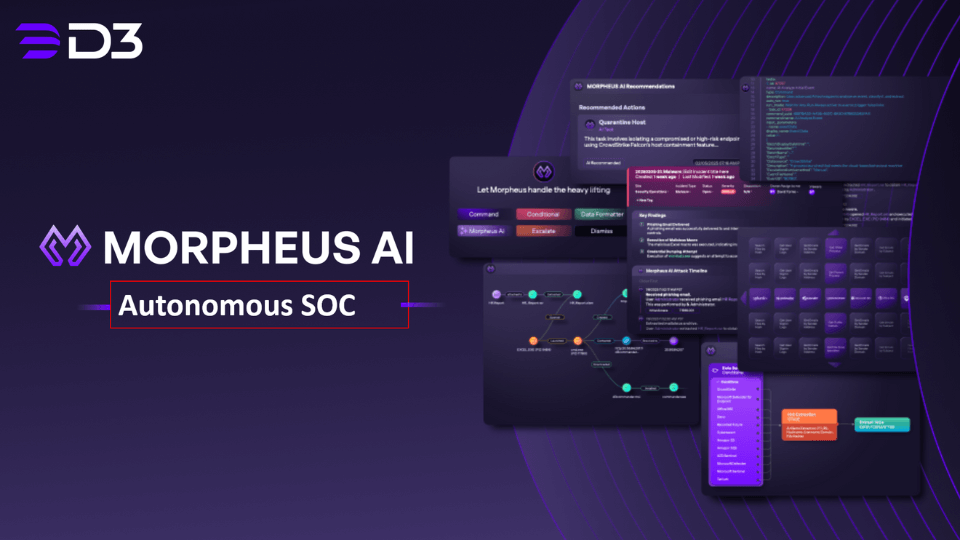
文章介绍了Morpheus AI如何通过自动化和智能化提升安全运营中心(SOC)的性能。该解决方案能够连接800多种安全工具,统一数据模型,并实时处理百万级警报。借助AI技术,Morpheus可快速调查、优先排序并提供具体修复建议,显著提高威胁检测和响应效率。 2025-10-24 23:12:39 Author: securityboulevard.com(查看原文) 阅读量:6 收藏
Your SOC handled over 1,000 alerts yesterday. Your team investigated about half of them.
The other half? They’re in a queue somewhere, aging out, or suppressed by rules you implemented just to stay functional. You know threats are hiding in that uninvestigated pile.
On average, 40% of all security alerts go completely uninvestigated. The average alert takes 70 minutes to investigate manually. Meanwhile, phishing attacks succeed in under one hour, and ransomware moves laterally within 90 minutes of initial compromise.
You know breaches are brewing. But investigating every alert with human analysts is mathematically impossible, and no amount of training or hiring can fix that. You need a fundamentally different approach to SOC operations. You need Morpheus, an AI-powered autonomous SOC solution that delivers exponential performance improvements across several dimensions: investigation speed, coverage depth, threat detection accuracy, and analyst effectiveness.
Connect to Any Customer Environment
Client 23 runs Microsoft Defender and Splunk. Client 24 uses CrowdStrike and Sumo Logic. Client 25 has SentinelOne, Palo Alto, and AWS GuardDuty. Client 26 wants to keep their existing Fortinet and Azure Sentinel stack.
Traditional MSSPs face a binary choice: Can we support their tools, or can’t we?
Each “no” narrows your addressable market. Each “yes” requires training, integration work, API connections, data parsing, alert normalization, playbook development. A new customer with uncommon tools becomes a 90-day engineering project before your SOC can even start monitoring.
Morpheus connects to 800+ security tools out of the box. Customers onboard in days, and don’t need custom integration work. You never disqualify prospects based on their tech stack, or pass on an RFP.

Normalize All Alerts Into a Unified Data Model
Security analysts are forced to learn a new investigation workflow for every tool in the stack, each with unique fields, models, and data structures. This inconsistency leads to fragmented investigations, longer onboarding, and duplicated training across platforms.
Morpheus normalizes every vendor’s data into a unified model. User becomes User. Endpoint becomes Endpoint. File Hash becomes File Hash. One investigation process works across all 800+ tools. Training time drops. Complexity drops. New analysts become productive faster.
100% Alert Coverage, 24/7/365
The average security alert takes 70 minutes to investigate manually. At scale, investigating everything is mathematically impossible. 57% of organizations suppress detection rules just to manage workloads.
Morpheus investigates 100% of alerts immediately. Triages 95% in under two minutes. Each investigation hunts both vertically and horizontally. Vertically means deep investigation within the tool that triggered the alert—checking all related events, correlating timestamps, examining the full context. Horizontally means investigating across the entire security stack—checking if this user showed suspicious behavior in other tools, whether this endpoint has other alerts, if this IP appeared anywhere else in the environment. Operates 24/7/365. Processes over one million alerts per day.
The AI SOC analyst never sleeps, never takes breaks, never experiences alert fatigue. 2 AM Christmas morning gets the same investigation depth as 10 AM Tuesday. Alert number 10,000 of the day gets the same focused attention as the first alert.
Analyst Workspace: Manage Triaged Alerts
Morpheus provides a customizable workspace where analysts manage triaged alerts. The workspace can be configured to match different roles and needs. Analysts work from one interface to review incidents Morpheus has already investigated.
IR Priority Score: Full-Stack Context
Dozens of medium-severity alerts sit in the queue. Which gets investigated first? Single-tool severity doesn’t account for broader context.
Morpheus’ IR Priority Score ranks incidents using full-stack insights. It considers user privileges, endpoint criticality, related alerts across tools, threat intelligence, and historical behavior patterns.
That medium-severity endpoint alert? IR Priority Score considers that the user is a finance department admin, the endpoint is a jump box with access to production systems, three other tools flagged unusual behavior from this account in the past 48 hours, and the process hash has zero threat intelligence hits but was created locally on the system. The score jumps to critical, and high-risk threats get immediate attention. You can confidently tell your clients that the most dangerous threats are always being addressed first.
Link Analysis: See Entity Relationships
Understanding the attack chain typically needs manual correlation across multiple tools. Query endpoint tool, check network tool, search cloud platform, review identity provider. Building the full picture takes hours while attackers move laterally.
Morpheus’ Link analysis displays complete entity relationships automatically. When an account triggers an alert, Morpheus shows every system touched, file accessed, network connection made, related identities across the entire security stack. The attacker’s kill chain becomes visible because Morpheus sees the relationships that single-tool investigations miss.
Forensic Timeline: Complete ATT&CK Chronology
Traditional forensic reconstruction takes days. Analysts manually correlate events across multiple tools, normalize timestamps across different time zones, sequence actions into a coherent timeline. They’re building a spreadsheet by hand, copying data from six different interfaces, trying to create a single source of truth about what actually happened with normalized timestamps and clear relationships.
With Morpheus your team starts at analyzing complete chronologies, which gives them the vision they need to use their intuition quickly to disrupt threats faster, and earlier in the chain.
Remediation Recommendations: Specific Actions
Your analyst finishes investigating. The threat is confirmed. Now what? Traditional handoffs are often too high-level, with vague summaries that read like workslop.
When an IR team picks that up, they need details:
- Which specific hosts were involved?
- What processes or hashes were observed?
- Which accounts need to be disabled or isolated?
- What network indicators should be blocked or monitored?

Morpheus provides specific actions: which accounts to disable, which endpoints to isolate, which IPs to block, which passwords to reset, which logs to review, with exact details from the investigation. Clear, actionable steps based on complete context.
Remediation Workflows: Execute Across the Stack
Recommendations tell you what to do. Your analyst needs to isolate endpoints, disable user accounts, block domains, update firewall rules, and reset passwords for privileged accounts, while threats stay active.
Morpheus remediation workflows execute response actions from one interface. Analysts execute complex, multi-tool response actions with single clicks instead of manual console work across multiple platforms. You can offer end-to-end incident response, from detection through investigation through remediation as a complete managed service.
SLA Performance: Meet Commitments Automatically
Manual SOCs consistently struggle to meet their service level objectives. Time to Acknowledge (TTA) often stretches as alerts queue overnight before an analyst can engage. Time to Close (TTC) extends as investigations grow complex and require coordination across teams. Escalation or notification times lag when validation and approvals slow down communication to key stakeholders. As a result, overall SLA compliance rates slip, reflecting the cumulative drag of manual triage, fragmented tooling, and human bottlenecks.
In contrast, Morpheus can dramatically improve your metrics related to acknowledgements, closure cycles, escalation velocity, and drive sustained compliance across the board. You will also see big improvements in Mean Time to Detect (MTTD) and Mean Time to Respond (MTTR), improving service quality at scale.

Exponential SOC Performance, Not Incremental Improvement
88% of organizations that do not yet run an AI-driven SOC plan to evaluate or are actively starting one up within the next 12 months. This stat tells you where the market is heading.
MSSPs with AI investigation are creating an information asymmetry that compounds. Better investigation wins sophisticated clients, which generate complex data, which further improve models and create a flywheel and a virtuous cycle.
Early movers have an unfair advantage, as that gap doesn’t close, it widens. The question: Are you building advantage or defending against margin compression? We’d love to show you how Morpheus transforms MSS delivery and operations, book a demo and watch it investigate alerts in real-time.
The post How MSSPs Achieve Exponential SOC Performance With Morpheus AI appeared first on D3 Security.
*** This is a Security Bloggers Network syndicated blog from D3 Security authored by Shriram Sharma. Read the original post at: https://d3security.com/blog/mssp-exponential-soc-performance-morpheus-ai/
如有侵权请联系:admin#unsafe.sh
